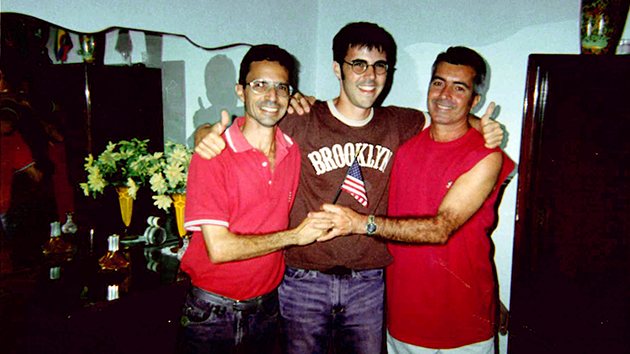
Greg Kahn/<a href="http://grainimages.com/">Grain Images</a>
If you know anyone who’s been to Cuba in the last decade or two, you’ve likely seen the photos from their visit: some lovingly restored colonial manors, sometimes right alongside a crumbling facade; the bookshelves lined up around Havana’s Plaza de Armas; and image after image of 1950s Buicks, Fords, and Chevrolets. All too often, Cuba is visually portrayed as nothing more than a tropical time machine, a place where the people and their lives aren’t nearly as interesting as the relics surrounding them.
Photographer Greg Kahn went to Cuba last year and documented the recent expansion of private businesses under Raúl Castro, a shift that has brought, Kahn writes, “a hesitant, wary embrace of new expression.” Sure, his collection includes the occasional photo of state iconography—for example, that famous Che Guevara sculpture in Plaza de la Revolución—but many of the images are of everyday people working, playing, and, in a way, making sense of a rapidly changing environment. In other words, they’re a window into a culture that might soon become increasingly familiar to Americans in the coming years.
All photos by Greg Kahn/Grain Images.
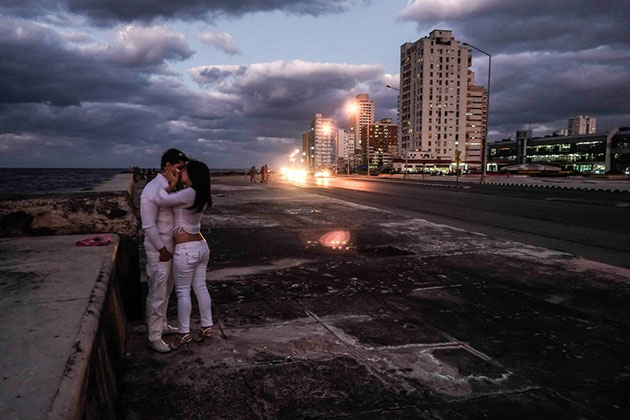
A couple kisses along the Malecón, a famous avenue along the water in Havana. With new regulations passing, allowing some forms of capitalism, many Cubans are wondering if this is the beginning of moving from isolation to globalization.
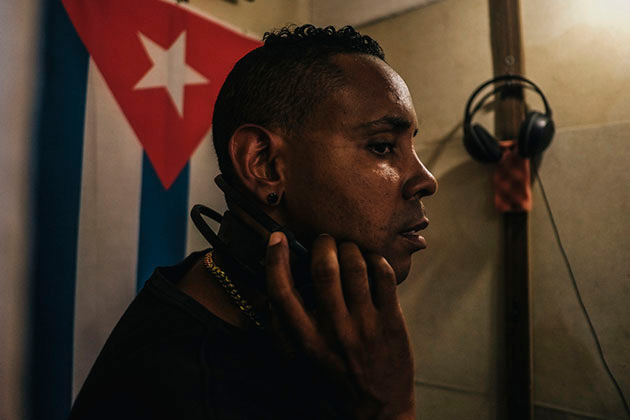
Yodany Rivero Marcial, a member of the group Onda Expansiva, records his part for a new track at a home in Alamar. Reggaeton, a style of music with Caribbean roots, has become wildly popular in Cuba, even though the Cuban government has cracked down on reggaeton artists, saying the lyrics are too vulgar and offensive.

More than half of the Cuban population is Catholic, and while Castro restricted religion shortly after he seized power in 1959, the government has since backed off and generally allow the freedom to practice religions that obey the laws of the country.

Children play in the streets of Havana.

Pigs are butchered in the morning at a local street market in Vedado, a suburb of Havana.

After spending the morning harvesting sugar cane, Yulien Díaz Hernández tries to get his old television to work to show cartoons to his son and daughter. Díaz Hernández said sugar cane workers are the first link in the chain of production, but the last to get paid.
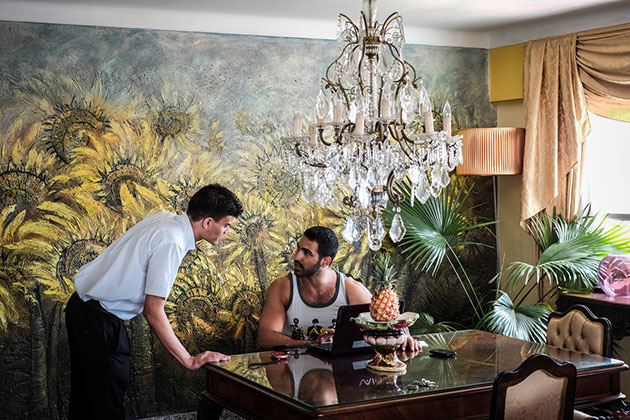
While many in Cuba live in poverty, there is a class of wealthy Cubans who have found success in owning private restaurants. This one, in Havana, is located on the 11th floor of an apartment complex and doubles as living quarters for the two men who own it.

Farmworkers pick up harvested sugarcane on a private farm in Caimito. The group, who work almost every day, only gets paid when the cane sells, so sometimes they can go weeks of work without being paid.
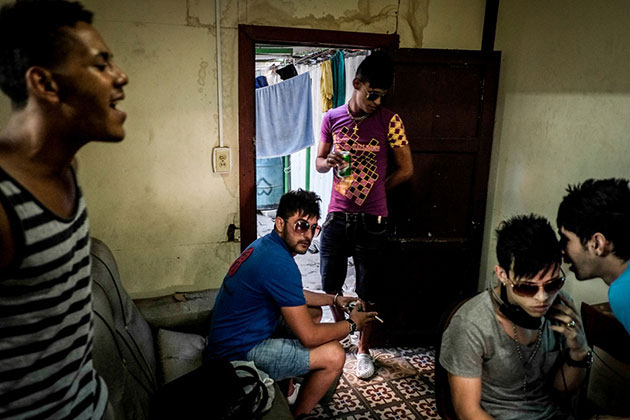
In a nearly empty apartment in Regla, a neighborhood of Havana, Juli Roby el Emperador, right, is joined by his entourage and friends to start creating new music for an upcoming US tour.

Dozens of flags titled the “Mount of Flags” in “Anti-Imperialism Park” sits directly outside the US Interest Section in Cuba.
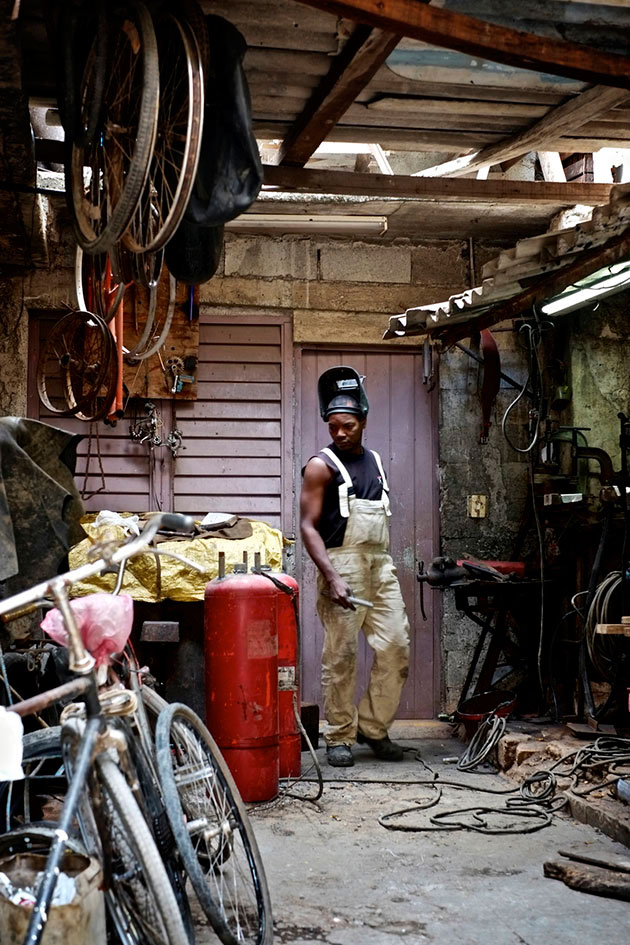
A mechanic works on bicycles in his shop in Old Havana. With a shortage of parts for many everyday items, Cubans have learned to reuse scraps to patch everything from cars to ovens.

An oil refinery, a sign of old industry, sends black smoke into the sky while residents wait at a bus stop along the Malecón in Havana.
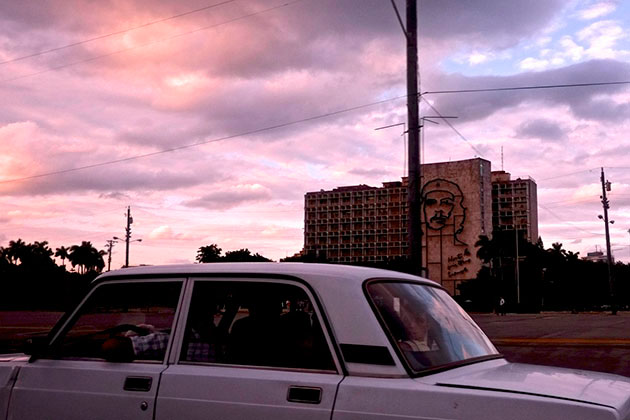
Cars travel around the famous Revolutionary Square in Havana.

The Malecón is a popular spot for Cubans and tourists alike.
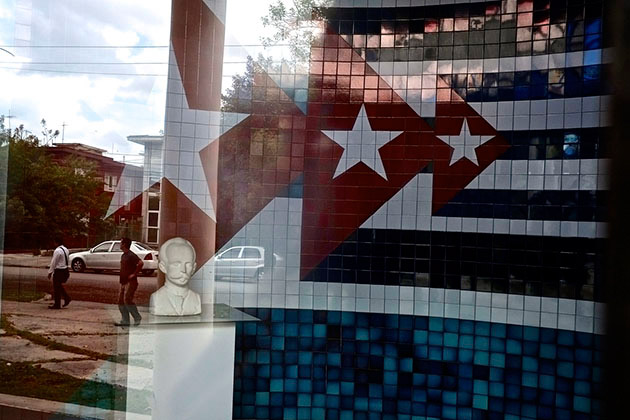
A tiled Cuban flag in a rundown building sits empty besides a sculpture of José Martí.
















